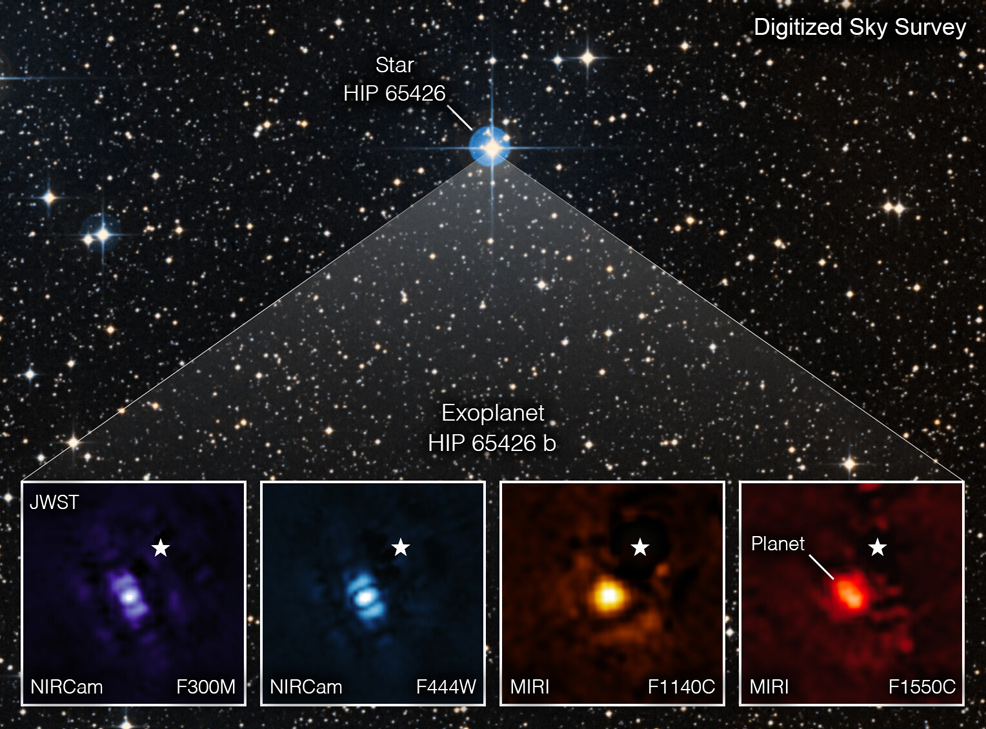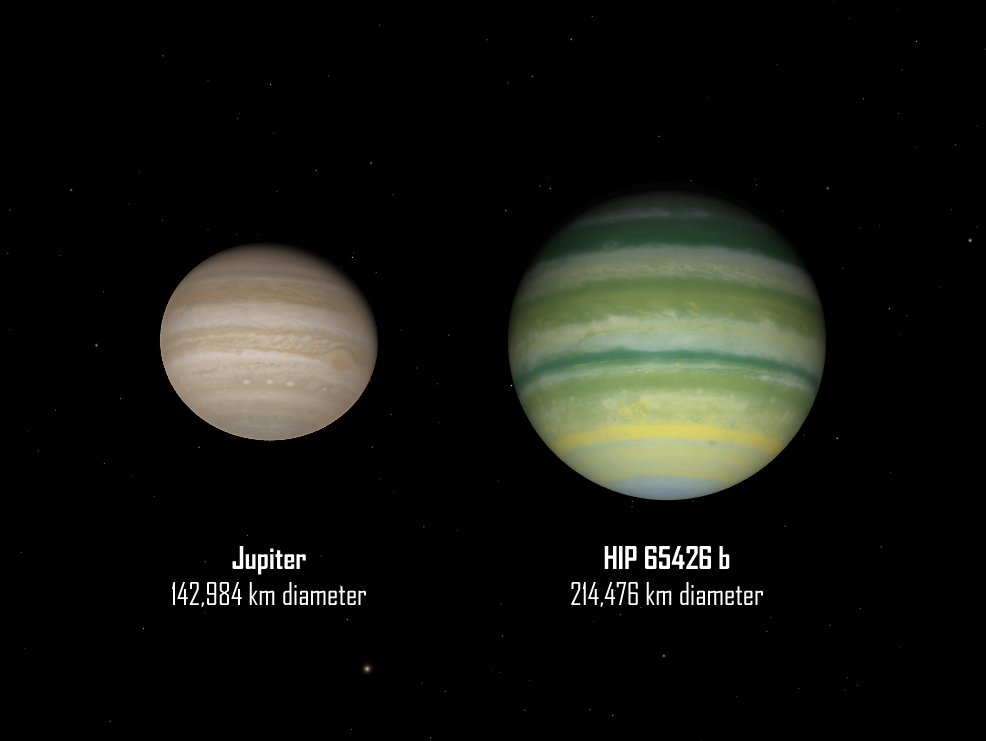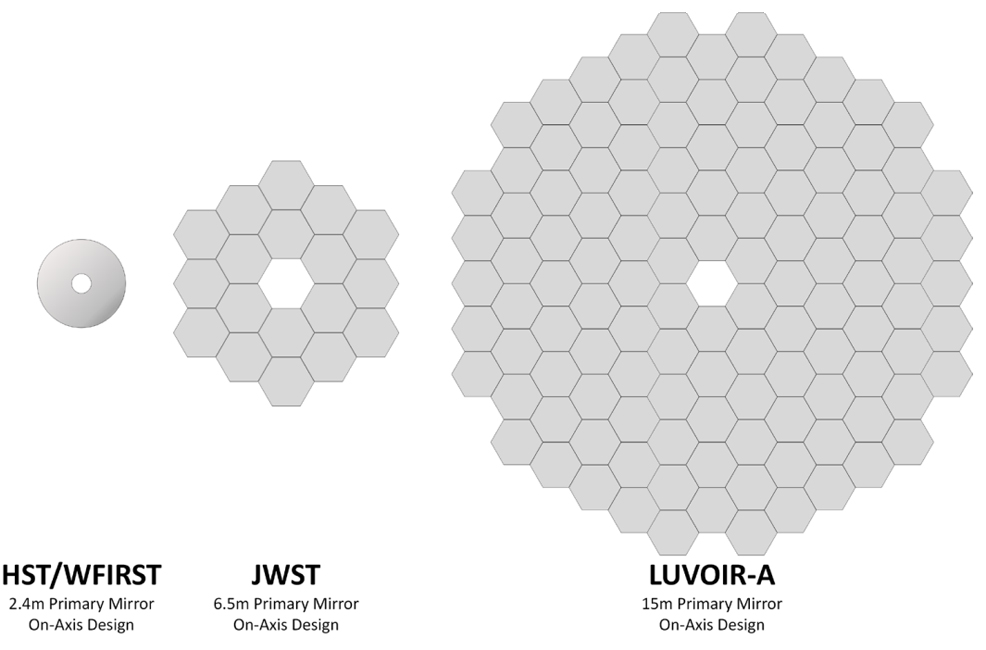
3rd September 2022 James Webb takes its first direct image of an exoplanet The James Webb Space Telescope has captured its first images of a planet beyond our own Solar System.
Last week, the James Webb Space Telescope (JWST) made the first ever detection of CO2 on an exoplanet. Following that scientific milestone, it has now captured a direct image of another planet – HIP 65426 b, which orbits the large A-type star HIP 65426. The system is 355 light years from Earth. Astronomers first discovered this gas giant in July 2017, using the Spectro-Polarimetric High-Contrast Exoplanet Research (SPHERE) instrument belonging to the European Southern Observatory (ESO). NASA made a follow-up observation to test Webb's capabilities, using the mid-infrared part of the spectrum to reveal new information that previous telescopes would be unable to detect. The spacecraft's Near-Infrared Camera (NIRCam) and Mid-Infrared Instrument (MIRI) are both equipped with coronagraphs to block the glare of starlight, which can be 10,000 times brighter than planets. This enables Webb to take direct images of exoplanets. HIP 65426 b is very large, with a radius 1.5 times that of Jupiter and a mass nine times as great. This places it within the "super Jupiter" category. It orbits at a distance of 92 AU (13.7 billion km) and takes 631 years to circle its star. For comparison, Pluto in our own Solar System lies at 39 AU (5.8 billion km) and takes 248 years to go around the Sun. It is believed to be relatively young, at only 15 to 20 million years old, compared to our 4.5-billion-year-old Earth.
The camera images are seen through four different light filters – ranging from 3.00 to 4.44 micrometres for NIRCam and 11.4 to 15.5 micrometres for MIRI. Different wavelengths (the purple, blue, yellow, and red seen here) can reveal slightly different information for astronomers to study. Their full analysis is expected to appear in a peer-reviewed journal shortly. "This is a transformative moment, not only for Webb but also for astronomy generally," said Sasha Hinkley, Associate Professor of Physics and Astronomy at the University of Exeter in the United Kingdom, who led these observations with a large international collaboration. "It was really impressive how well the Webb coronagraphs worked to suppress the light of the host star." "I think what's most exciting is that we've only just begun," said Aarynn Carter, a postdoctoral researcher at the University of California, Santa Cruz, who led the analysis of the images. "There are many more images of exoplanets to come that will shape our overall understanding of their physics, chemistry, and formation. We may even discover previously unknown planets, too." Indeed, this first direct imaging is merely a taste of Webb's capabilities. HIP 65426 b is very large and quite distant within its system. However, the JWST is designed to image planets of much lower mass and with orbits far closer to their parent stars. Its lower limit for those of ~100 AU around main-sequence stars is expected to be 0.3 Jupiter masses, about 30 times less than HIP 65426 b. In systems with a red dwarf, it might be possible to image objects with the same mass and orbital distance as Saturn (10 AU). For the Alpha Centauri system, our closest stellar neighbour, Webb might be able to image a super-Earth (if such a planet exists there) at just 0.5 to 2.5 AU. For comparison, the current record low mass for an exoplanet confirmed through direct imaging is 2.0 Jupiter masses, while the orbital separation record is 9 AU. Looking further into the future, proposed telescopes such as the Large Ultraviolet Optical Infrared Surveyor (LUVOIR) may be powerful enough to reveal the presence of oceans and land masses on these unimaginably distant worlds.
Comments »
If you enjoyed this article, please consider sharing it:
|









